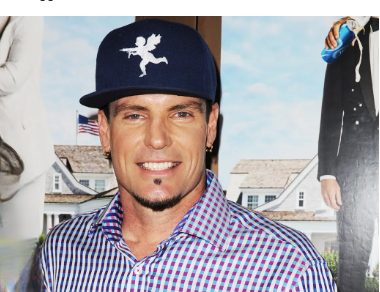The estimated $20 million fortune of Vanilla Ice in 2025 is indicative of a career that has been exceptionally successful at adjusting to changing entertainment environments. His meteoric rise in the early 1990s was characterized by the hit song “Ice Ice Baby,” which not only peaked at the top of the Billboard charts but also became a cultural icon. For its time, the song’s crossover success was especially inventive, bringing hip-hop to MTV rotations and suburban homes in a way that few had predicted.

He became the fastest-selling hip-hop artist in history when his debut album, To the Extreme, sold over 15 million copies. He shared stages with legendary artists like Ice-T, performed to crowded arenas, and contributed pop-culture hits like “Ninja Rap” to the Teenage Mutant Ninja Turtles II soundtrack when he was at his best. However, there were layers of complexity associated with fame. Skepticism was ultimately sparked by his label’s inflated backstory, which included false rivalries and allegations about his Miami upbringing. His commercial dominance started to wane as a result of the backlash, which severely damaged his reputation in the hip-hop community.
Vanilla Ice – Personal and Professional Overview
| Category | Details |
|---|---|
| Full Name | Robert Matthew Van Winkle |
| Stage Name | Vanilla Ice |
| Date of Birth | October 31, 1967 |
| Birthplace | Dallas, Texas, USA |
| Profession | Rapper, Actor, Television Host, Real Estate Investor |
| Net Worth 2025 | $20 million |
| Famous For | Hit single “Ice Ice Baby” |
| Debut Album | To the Extreme (1990) |
| Other Ventures | Home renovation TV shows, real estate investments |
| Notable TV Show | The Vanilla Ice Project |
| Major Career Shift | Transitioned from music to real estate and TV |
| Properties Owned | 15 |
| Annual “Ice Ice Baby” Royalties | $400,000 |
| Official Reference | www.celebritynetworth.com |
The financial impact of “Ice Ice Baby” proved remarkably resilient, even as the charts changed. According to court documents from his 2018 divorce, the song’s royalties continued to bring in about $400,000 a year. His assets were worth about $5 million at the time, with the potential for much higher real estate market values. These included 15 properties, eight cars, a boat, and $3 million in liquid funds. His estimated $10 million minimum net worth at the time demonstrated how well he had diversified his sources of income outside of music.
In terms of reinvention, the move from rap star to television personality and real estate was a surprisingly cheap gamble; yes, it required investment, but the rewards were significant. His expertise in flipping properties and renovating opulent homes was showcased in his long-running series, The Vanilla Ice Project. This was no vanity project; rather, it was a very effective way to change his public persona and capitalize on America’s growing interest in real estate entertainment.
LL Cool J balanced music, acting, and hosting, while Mark Wahlberg transitioned from music to acting and business. These reinvention strategies were similar to those of other entertainment figures who have significantly increased their longevity through diversification. This reinvention was personal as well as professional for Vanilla Ice. He consciously chose to put his music career on hold, concentrate on sobriety, and start over with a foundation of stability and creative control after years of mental health issues and even a suicide attempt.
His financial portfolio is very diverse today. Although royalties continue to be a steady source of income, real estate has emerged as the main source of his wealth. Along with television revenue, sporadic performances, and well-timed public appearances, he oversees an impressive collection of residential and commercial properties. His brand and bank account have remained active for decades, despite changes in the industry, thanks to his remarkable ability to stay relevant.
His early success’s social impact is still a topic of debate. Even though some critics questioned his sincerity, “Ice Ice Baby” undoubtedly broadened the appeal of hip-hop. Alongside peers like MC Hammer, it helped facilitate the genre’s assimilation into mainstream American culture. The song continues to have cultural currency decades later, appearing in viral internet trends, movie soundtracks, and advertisements.
Financially speaking, Vanilla Ice’s tale is remarkably similar to that of other alleged “one-hit wonders” who overcame adversity. He created an empire; many artists become obscure. His willingness to change and his methodical approach to wealth management enabled him to turn his brief fame into a long-term, stable career. When combined with a diverse asset base, the longevity of “Ice Ice Baby” royalties is especially advantageous for preserving financial stability in an uncertain sector.
His professional trajectory serves as evidence that reinvention is a proactive tactic rather than a backup plan. The journey from rapper to investor to TV personality exemplifies a type of flexibility that is remarkably evident in both its implementation and outcomes. It serves as a reminder that successful people in the entertainment industry, like those in business, are frequently those who are prepared to change who they are without losing who they are.
